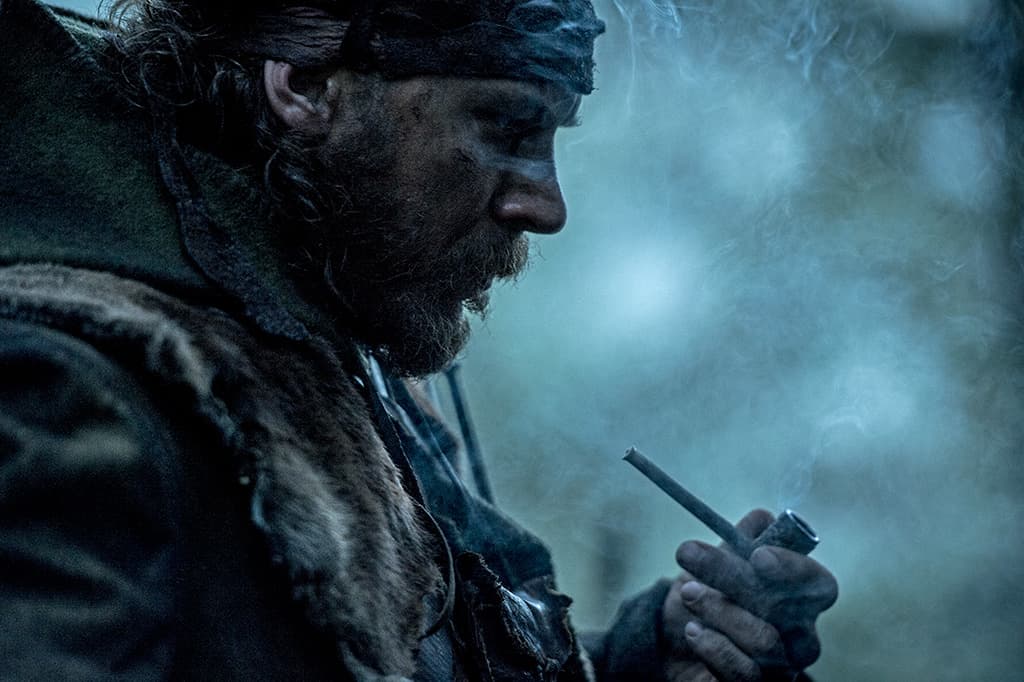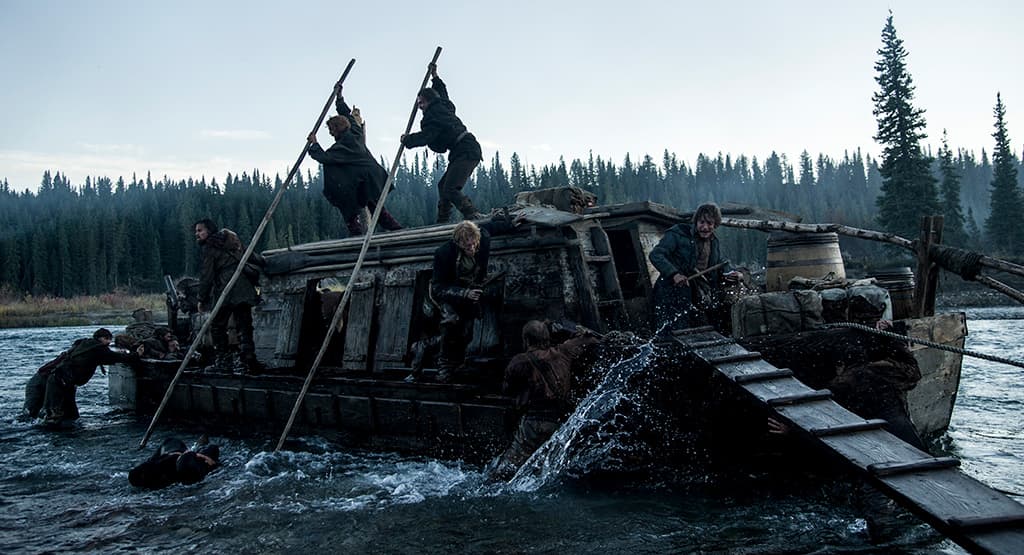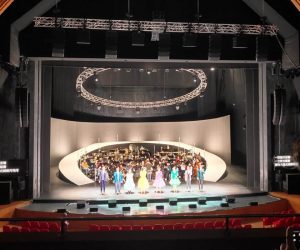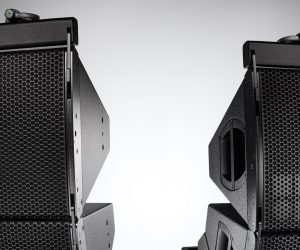
Wild Sounds: Mixing The Revenant
Alejandro Iñárritu didn’t take home back-to-back Best Director Oscars by taking it easy. The Revenant was filmed on location in the winter wilderness, and that production sound made it all the way into the final mix.
Alejandro Iñárritu has a nose for unique birds, and an ear it seems. He co-wrote and directed Birdman or (The Unexpected Virtue of Ignorance), about a mentally ill action movie star-cum-theatre aspirant who couldn’t shake the Tyler Durden-esque birdman that haunted his consciousness. It won him a Best Director Academy Award. Recently he won the same Oscar for The Revenant, making him the first director in 65 years to go back-to-back.
Jon Taylor — who with Frank Montano made up the re-recording mixer team behind both projects — knows Iñárritu’s taste for rare birds all too well. “There was a scene from The Revenant with bird sounds,” said Taylor, making pains to point out they were, “really interesting sounding birds. And Alejandro says, ‘what are those birds? Did you wake up in the morning and put a microphone out the window to record those? They do not belong in my movie. Every single sound has to be unique to my film.’ That was the approach every single day, it was a lot of work.”
That quest for uniqueness has set Iñárritu apart. It wouldn’t appear that difficult to stand out amongst the swathe of blockbuster superhero flicks, but it requires an incredible amount of work when you’re also trying to preserve original performances and the location sound as much as possible. Times that by a difficulty factor of a thousand because the film location wasn’t a studio backlot but the wilderness of Argentina, Canada and Mexico.
For all those pieces to work, it wasn’t just Alejandro demanding it, but the team had to double down and work out exactly how they would use mono sound literally captured in the wild and make it the bedrock of an expansively filmed epic. One of the major concerns early on was whether Tom Hardy’s dialogue would be intelligible enough. At least this time he wasn’t wearing a Bane mask. Alejandro was consigned to ADR-ing Hardy’s performance if he absolutely had to, but the entire team were pushing to keep it. “Why would you change such an unbelievable performance?” questioned Taylor. “You don’t get it all, but it was so compelling, so authentic and so maniacal the way he talks, that it works.” During a break in another film, Taylor spent 12 days pre-dubbing dialogue the editors had cut together, striving for clarity and intelligibility, especially on Hardy’s takes.

Whenever you walk down the street and hear a dog bark, you get on edge, so we keep that in some of the dialogue for that reason
SETTING THE TONE
In many ways, those 12 days set the tone for the entire mix in two specific ways. First, they doubled down on their commitment to using as much of Chris Duesterdiek’s production sound as possible. “He mostly covered everyone with the shotgun, and for the most part there was very excellent coverage,” said Taylor. “Boom voices are the preferable source because it sounds more real. If we’re having problems with clarity from the boom, we’ll try to use consonants or syllables from the lavalier to enhance intelligibility.” Secondly, the rawness of the The Revenant’s harsh winter setting was brought out in the dialogue. “Re-recording mixers generally have a sound they go for,” explained Taylor. “Alejandro’s incredibly picky about the quality of dialogue, it has to feel raw. When they’re yelling at you, it has to feel like dogs barking. Normally you’d reel that stuff in and not let it sound so aggressive, but in this case it has to come at you and make you feel threatened in some way. It’s really important for those elements to come out, so I don’t use a ton of compression, I use a lot of EQ and little volume graphs to get clarity. It’s as raw as possible with it still sounding like people talking to each other in the movies, not like a TV show.”
At the end of the day, there were only a few pieces that had to be re-looped because there was a lot of dialogue getting panned in the mix and he didn’t have the separation he needed. However, ADR was mostly used to re-loop the American Indian dialogue, and only to ensure they had highly accurate readings of the Arikara and Pawnee language. “On the set they may not have been totally accurate,” explained Taylor. “Alejandro was very demanding of that. They ended up having three or four professional interpreters and culture consultants come in and read through the lines with the actors again.” Duesterdiek logged every microphone he used so the ADR team could match every mic exactly. Surprisingly, a high percentage of Leonardo Di Caprio’s grunts, which made up most of his onscreen audio, were from the original production sound taken while he was crawling around on the ground.
While Taylor had the job of bringing clarity to the vocals, he was somewhat hamstrung by Alejandro’s insistence on raw reality and that nothing be ‘cleaned’ right out of the dialogue track. “Whatever’s there is there,” said Taylor. “When they’re at the river, a lot of the sound you’re hearing is production sound supported by backgrounds. This is a fully immersive film, whereas the production sound is generally mono. If I pan it to the left, then all that natural noise is just in the left. If the people are speaking in the centre, then all of the natural noise is in the centre. That had to be supported with many different tracks in the background.”

BOOM BALLET
While Duesterdiek took his lunch hour off to try and match a few perspectives, boom operator Charlie O’Shea was doing that dance full time. “They used a lot of wide lenses on this shoot,” explained Duesterdiek. “In one shot they could capture the entire mountains and background, then swing around and bring it within inches of an actor’s face. As long as Charlie matched that perspective, it would sound wide, then when they swung it around, he could get into the breath and crunchiness of the beard at times. That reinforced the image, which is our whole job.
“Charlie and I collaborate; he doesn’t tell me how to mix and I don’t tell him how to boom. I might ask for more meat of certain elements, but I’ll leave it up to him how he wants to accomplish that. The camera is constantly moving, so he’s going in and out with the lens, moving through trees, extending the pole and bringing it back in to get around branches, going from underneath, up top, from the side. It was like watching a ballet with the camera, which is what an experienced boom operator brings to the table. I can’t tell him to change a footstep in his ballet.”
Early on, Duesterdiek heard some issues with the intelligibility of Tom Hardy’s character. “At the end of the day,” he said. “It’s a creative choice between the performer and director. Sometimes I may mention it to the director at the start of a shoot, other times I’ll not mention it at all, which was the case on The Revenant. Alejandro seemed to be liking it and Tom certainly made a choice to perform it that way. Technically we were recording exactly what he was choosing to do.”
COLD SNAP
While the camera department had some mechanisms freeze over, and video playback scrambled to keep their rig running, the sound gear managed to handle the cold. 12 years ago, Duesterdiek filmed The Snow Walker up in Canada’s far north: “That taught me a lot about what to prepare for in the Winter, like keeping your batteries warm and having many extra batteries and cables. When it gets too cold your cables can break. We had certain cables made with looser insulation wraps on them, would coil XLR cable in very large loops, and carry triples of any smaller timecode and auxiliary component connector cables. There comes a time, when it’s -30 degrees, that something is going to snap, and you can’t just go buy another one. Some batteries went down, but we had extras, and the main components worked seamlessly.
“It was quite a trip, but I’m not going to rush out and do another one right away. I can check that off the list for a while.”

DIVIDE & CONQUER
Taylor and Montano mix together, but the typical division of duties sees Taylor take care of the dialogue and music cues, while Montano manages most of everything else like sound effects and ambiences. The first thing they do before pulling up any sessions is watch the film in its current state. “Even though we’ve read the script, and ideas have been conveyed,” said Montano, “once you watch the movie you see where the challenges are going to be. There was so much unique camera work, with 360-degree shots and moving from location to location that we knew once we got into the body of the film it would have to emulate the location, camera movements and transitions.” On his first viewing, Taylor noticed one main thing, a conspicuous lack of music. “When I saw the first cut of this film I saw four music cues that came to about six minutes of music,” he recalled. “I saw it before Frankie and came back to tell him, ‘You’d better buy some new tennis shoes, because I’ll be done after the dialogue’s pre-dubbed and you’ll be working your arse off.’”
Taylor says, even though Alejandro is also a composer, there’s never much music in his films: “Birdman had the most music of all of them put together. In Babel there was 22 minutes of score across a two and a half hour film. Biutiful was about the same, and 21 Grams had even less than that.” Over time, quite a bit of music was added to the film before Alejandro pared it back again on the final dub stage. “Truth is,” said Taylor. “There’s a lot of music in this movie but you don’t notice it because the goal was to make sure the nature never went away. Music was to never take over nature; it was often treated like an ambience.”
Once the edited post-production recordings started making their way down the chain, Taylor and Montano started piecing all the elements together and working on the mix to get separation, depth of field and movement. Montano: “The wind separate from the trees, tree leaves separate from multiple layers of water, and layers of specific ambient sounds we can build depth with — in the distance, close, behind you, on the side of you. All that is separated and managed, ready for the final mix, so when filmmakers come in we can really isolate and manipulate everything.” The tracks have either been recorded and cut from an archive library or are fresh recordings that Sound Designer Jon Title and his team of editors sync to picture. By the time it gets to the Hitchcock Theatre, “the characters and locations have either run through Alejandro or Stephen Mirrione, the picture editor,” said Montano. “If you see it, you may or may not hear it, but it has to be available. Once we open up the size of the spaces, that’s really where the shaping occurs.
“We listen to it against the final music track, the production dialogue and ADR, building it up to see how much we can get away with, and how much really fits with what Alejandro is trying to say with the film.” The film often slips between two feels — raw reality and ethereal dreams — tracing the arc of the wounded main character Hugh Glass as he slips in and out of consciousness. The realtime raw feeling of ‘being there’ is often self-explanatory as it tracks the change in terrain from location to location. Then there’s mixing the emotional content like the ethereal flashback dream sequences, but also incorporating real sounds that are effective even though they might not be indigenous to the location, like a cricket chirping away in the middle of the winter wilderness. “That cricket sound is derived from when Glass goes into some of the dream sequences and is seeing his son, Hawk,” said Montano. “It’s his signature post life surreal sound, and it follows, to a degree, any confrontation he had.
“In the final scene, where they’re talking before they throw down and fight, it’s in the music and not used as an effect. The cricket is really prevalent and acts as a catalyst to let you know it’s about to hit the fan. To make a statement with it we had to play it 20dB louder than it should have been. If you didn’t play it loud, you would have thought it was a cricket in the snowy woods, which would be completely inaccurate, there’s no such thing! You have to play it as if it’s a piece of narration.”
Alejandro’s very aware of lowering things in order to hear dialogue clearly. He doesn’t like that; he knows it’s a Hollywood trick
MOVEMENT & COLOUR
One of the hallmarks of The Revenant is Iñárritu’s embrace of movement. It’s a journeyman film, which means you’re constantly on the move as you track Glass from location to location. There are also some incredibly dynamic scenes like the opening battle sequence where the camera changes direction in an instant as it picks up characters in full flight. “This particular movie was all about the movement,” said Montano. “Tracking the camera, the location, depth of field. Those things make it feel like you’re part of those scenes; inside the film rather than outside of it. They all take a life of their own.
“That was the edict, there was always a point of view. Whether it’s Leo’s breaths in his struggle, the point of view of nature, the point of view of travels. There was always a point of view; a narrative to every sound and every scene, no matter what that sound may be.”
“Alejandro thinks of it like a spotlight, where everything has its 15 seconds of fame,” said Taylor. “Basically, everything gets a little bit of a magnifying glass.”
That process of drawing the viewer’s attention isn’t unique to Alejandro’s films. It’s standard practise for re-recording mixers to move sounds out of the way into different surround channels, dig a little hole in the music, and use level, space, equalisation and reverb to make sure a sound has the presence it needs.
However, the challenge with Alejandro’s films is his disinclination to be polite, preferring to shoot for accuracy rather than ease. One of the hardest scenes to mix, said Taylor, was the tavern scene towards the end of the movie where Henry and Fitz are holding a conversation: “It was one of those scenes where you can’t be polite just because they’re talking. You’ve got 50 people in that room — a bunch of drunks, prostitutes, violin players. Alejandro’s very aware of lowering things in order to hear dialogue clearly. He doesn’t like that; he knows it’s a Hollywood trick. Everything has to be constructed to feel natural. Having a nice bed of walla that everyone can fit into, and then have the callouts, the laughs, the dropping of drinks, or the violin players all happening. It’s immersive, so all of these things have to come from different speakers. It seemed like a small scene, but there were four days in that scene, just in final mixing.
“Keeping it authentic was the goal, nothing so out of place that it took you away from the experience. It had to be completely immersive — so you’re part of the movie rather than watching the movie — but that was always a moving target. We found the dynamic range in this movie could go from something extremely large to an intimate moment shortly thereafter and really bring the audience in.
“The bear attack had three phases to it. Between the attacks you hear all the forest life still going about daily business, the wind and trees. Then mama bear would come back and have another go. There’s always a fine line between hyper reality and realism though. For instance, the bear never vocally overpowered Leo, you always heard his angst and battle to survive. In this movie, things that happened on a real visceral level and had extreme dynamic shifts had a real emotional impact. The audience is always on edge; man versus nature, then the struggle turned to man versus man.
“There are no rules, because it’s what works emotionally. In the dialogue, you don’t want that painful 3kHz, but it’s a little bit of a dog barking at you. Whenever you walk down the street and hear a dog bark, you get on edge, so we keep that in some of the dialogue for that reason. You don’t know why, but you’re a little scared all of a sudden.
“In this case, there weren’t very many music pieces that were elevated. However, even if you take a beautiful score that has lush strings and play it 8dB louder than it should be played, it’s going to affect you differently. You feel oppressed somehow. They’re not ‘tricks’, they’re just where you have to be to get the emotion you’re looking for.”


JOURNEYMEN OF SOUND
“Alejandro gave a great analogy on one of our last days,” said Taylor. “He said, ‘Making this movie is like freehand rock climbing. You get to the middle of the mountain and you can’t go down. You have to go up to survive.’”
The Revenant had its challenges that were felt all the way from the wild to the relatively cosy confines of Hitchcock Theatre. “It wasn’t a straight line,” said Montano. “There was always something to experiment with. A piece of audio that needed to say something. There was nothing we could cruise through. But it’s a post-production sound mixer’s dream to work on something so visually interesting and epic that there’s no choice other than to sonically follow and emulate.”
“I’m just going to throw out numbers,” said Taylor. “But on our first playback of a reel, we may have 100 notes, second playback we may still have 100 notes, third — 75, fourth — 50, fifth — 25. Next thing you know, you’ve worked through every reel and then you watch the whole movie. Then it’ll come down to five notes. Eventually he left this movie with zero notes, which is proof he’s getting everything he wants out of the film.
“It’s a really good feeling going through this journey — similar to Hugh Glass in many ways — and come out the other side where everybody has a huge smile on their face. Sometimes this job is easy, and sometimes it’s a lot of really hard work. Those are the ones we prefer best, being pushed by someone as creative as Alejandro.”
Own The Revenant on Digital HD on May 4 and on Blu-ray™ and DVD on May 18.
















This was a terrific article, and gave deep insight into location recording and final sound mixing.